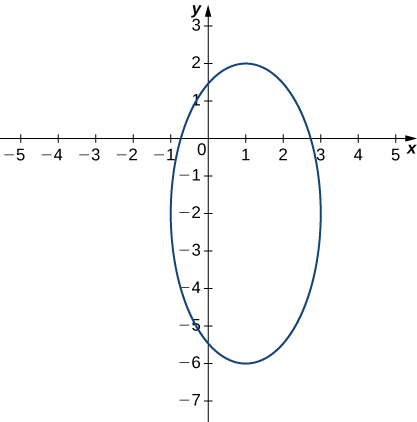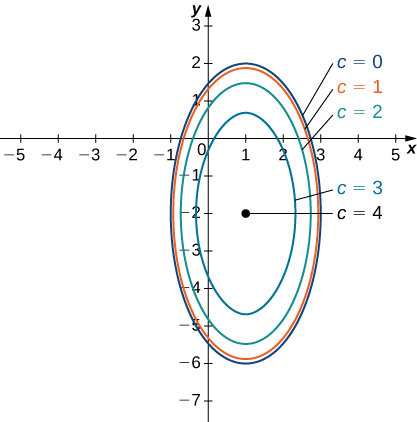| << Chapter < Page | Chapter >> Page > |
If hikers walk along rugged trails, they might use a topographical map that shows how steeply the trails change. A topographical map contains curved lines called contour lines . Each contour line corresponds to the points on the map that have equal elevation ( [link] ). A level curve of a function of two variables is completely analogous to a contour line on a topographical map.

Given a function and a number in the range of level curve of a function of two variables for the value is defined to be the set of points satisfying the equation
Returning to the function we can determine the level curves of this function. The range of is the closed interval First, we choose any number in this closed interval—say, The level curve corresponding to is described by the equation
To simplify, square both sides of this equation:
Now, multiply both sides of the equation by and add to each side:
This equation describes a circle centered at the origin with radius Using values of between yields other circles also centered at the origin. If then the circle has radius so it consists solely of the origin. [link] is a graph of the level curves of this function corresponding to Note that in the previous derivation it may be possible that we introduced extra solutions by squaring both sides. This is not the case here because the range of the square root function is nonnegative.

A graph of the various level curves of a function is called a contour map .
Given the function find the level curve corresponding to Then create a contour map for this function. What are the domain and range of
To find the level curve for we set and solve. This gives
We then square both sides and multiply both sides of the equation by
Now, we rearrange the terms, putting the terms together and the terms together, and add to each side:
Next, we group the pairs of terms containing the same variable in parentheses, and factor from the first pair:
Then we complete the square in each pair of parentheses and add the correct value to the right-hand side:
Next, we factor the left-hand side and simplify the right-hand side:
Last, we divide both sides by
This equation describes an ellipse centered at The graph of this ellipse appears in the following graph.

We can repeat the same derivation for values of less than Then, [link] becomes
for an arbitrary value of [link] shows a contour map for using the values When the level curve is the point


Notification Switch
Would you like to follow the 'Calculus volume 3' conversation and receive update notifications?